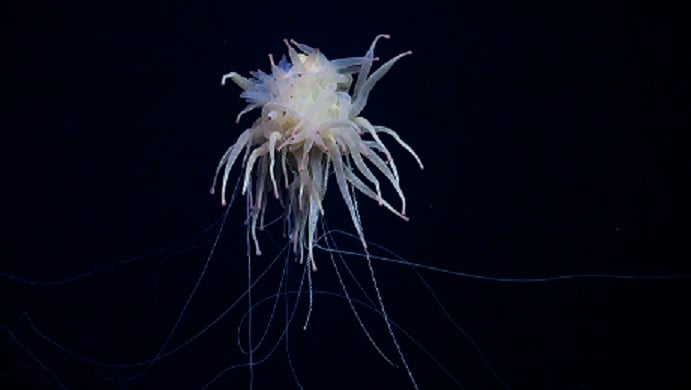
A new underwater Nazca Ridge mountain, taller than Mount Olympus in Greece, has been discovered and is home to at least 20 previously unknown sea life species, CNN reports.
Researchers from the Schmidt Ocean Institute in California found the sea mountain about 900 miles off the coast of Chile in a crucial habitat for a range of marine species.
Scientists also believe that the sea mountain in the Nazca Ridge houses “pristine ecosystems” of newly discovered species.
Researchers spent a month mapping the mountain which rises almost two miles towards the surface from the ocean floor. They believe there are at least 100,000 summits and mountain ranges rising above the deep-sea floor, taller than 1,000 meters as part of the Nazca Ridge, an underwater mountain range in the southeast Pacific Ocean.
The potentially new species discovered need to be officially confirmed, as a full species identification can take several years. Among them are types of sea urchin, starfish and a squat lobster. The findings will be submitted to the Ocean Census, which certifies the discovery of new marine species.
The Nazca Ridge, which is taller than Greece‘s Mount Olympus
The Nazca Ridge is a submarine ridge, located on the Nazca Plate off the west coast of South America. This plate and ridge are currently subducting under the South American Plate at a convergent boundary known as the Peru-Chile Trench.
The CNN report says that the newly mapped underwater mountain in the Nazca Ridge is taller than Mount Olympus in Greece, which is 2,917 meters (9,570 feet) high; smaller than Japan’s Mount Fuji, which stands 3,776 meters (12,388 feet) tall; and almost quadruple the 830-meter (2,723-foot) height of Burj Khalifa, the Dubai tower.
According to the Schmidt Ocean Institute, the Nazca Ridge is a poorly explored area of the Pacific ocean floor. The underwater terrain consists of seamounts, trenches, canyons, and guyots formed by the same volcanic source as the adjacent Salas y Gómez Ridge.
It is the oldest of the two seamount chains, with some sections estimated to be over eleven million years old. The tops of the tallest seamounts on the ridge are nearly 2,000 meters below the ocean’s surface, making them some of the deepest seamounts in the world.
The waters above the ridge are influenced by one of the most productive oceanographic patterns occurring in the Peru shelf, namely the Humboldt Current, also known as the Peru Current. It is an eastern boundary current that moves from south to north and runs parallel to the coasts of Chile and Peru, drawing frigid waters from Antarctica towards the equator.
The Southeast Pacific is one of the world’s most productive regions, rich in massive plankton blooms that support an intricate food web and many commercially important fisheries. This makes Peru one of the leading fishing nations in the world, with an estimated 15 percent of the Earth’s annual catch of fish.



